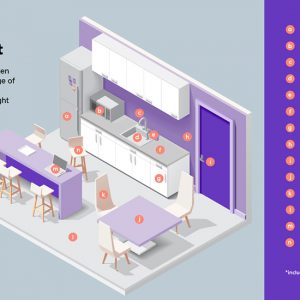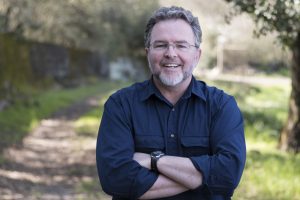Understanding Antimicrobial Materials

Understanding Antimicrobial Ingredients in Building Materials in light of the current and future health crises
Learning Units: 1LU/HSW
This is a virtual event. Meeting information will be email directly to registrants.
In response to growing concerns over COVID-19, authors of a recent report, “Healthy Environments: Understanding Antimicrobial Ingredients in Building Materials” will present their findings. No evidence demonstrates that products intended for use in interior spaces that incorporate antimicrobial additives actually result in healthier populations, and may have negative impacts on both people and the environment.
Presenters:

Bill Walsh, Founder of HBN
Bill Walsh is the Founder of the Healthy Building Network (HBN). Since 2000 HBN has been defining the leading edge of healthy building practices that increase transparency in the building products industry, reduce human exposures to chemicals in building materials, and create market incentives for healthier innovations in manufacturing. He has been Visiting Professor at Parsons The New School for Design, is a Fellow of the Lowell Center for Sustainable Production at the University of Massachusetts, and a founding board member of the Health Product Declaration (HPD) Collaborative. Bill and HBN have been awarded the Design for Humanity Award by the American Society of Interior Designers (2019); WEACT for Environmental Justice Leadership Award (2018); Healthy Schools Network Hero (2013); US Green Building Council’s Leadership In Advocacy Award (2012). Previously he served as a national campaign director at Greenpeace USA, and held staff attorney positions with the US Public Interest Research Group and the Institute for Public Representation at Georgetown University Law Center. He holds a J.D. from Northeastern University School of Law and LLM in Public Interest Advocacy from Georgetown University.

Mary Dickinson, Assoc. AIA, LEED AP BD+C, Associate Principal at Perkins+Will
As Regional Sustainability Practice Leader, Mary has worked on over 5 million square feet of sustainable design projects, many of which have been 2030 compliant. She managed the creation and launch of the new Transparency Site with updated Precautionary List and is a member of the Sustainable Design Council and Research Board. This role has allowed her the opportunity to quickly respond to the firm’s big ideas, sharing and applying them in-house with local design teams. Her design philosophy is fueled by solutions that allow projects to weather the storm while reducing the impacts of the land they sit on and the people that occupy them.
A lover of animals, plants, and all things nature, Mary is unsurprisingly drawn to sustainability. Even in her own home she is working on reducing her family’s footprint by eliminating the use of plastics, nurturing a garden, participating in composting and recycling, and enjoys continually making home updates that reflect her sustainable priorities.
Learning Objectives:
- Participants will be able to identify interior finishes that may contain antimicrobial additives.
- Participants will be able to critically analyze health claims related to antimicrobial products.
- Participants will be able to identify authoritative sources that provide ongoing guidance about the efficacy of antimicrobial building materials.
- Participants will be to explain the potential negative health and environmental impacts of antimicrobial building products.
Photo Credit: Perkins + Will
Corrine Ellingson May 28th, 2020
Posted In:







